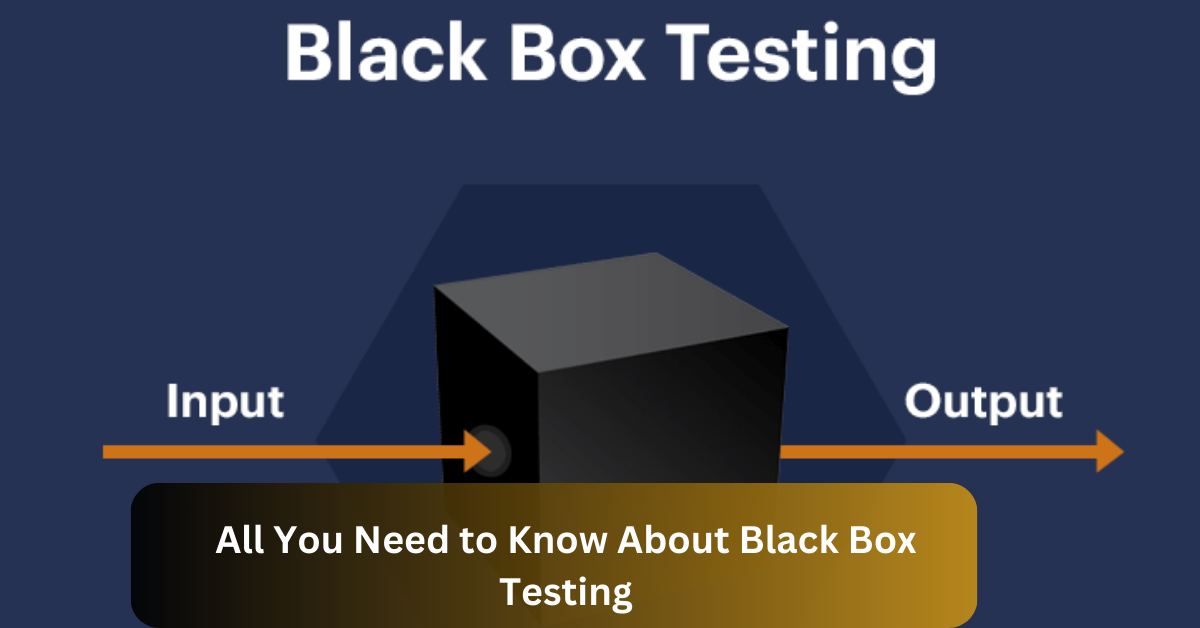Black box testing is a critical component of software development that ensures application dependability and functionality. Black box testing, also known as behavioural testing, is a software testing method that analyses an application’s functioning without taking into account the internal code structure.
Testers evaluate the system only on its inputs and outputs, treating it like a black box. Here is everything you need to know about black box testing:
Why Black Box Testing is Crucial?
1. Ensuring Software Reliability
It is important to ensure that any software functions effectively. This is where black box testing comes in! Testers experiment with the software, evaluating all of its features to ensure that it works properly. They ensure that the app executes all its promises.
This guarantees that when you push a button or enter your confidential password, it accomplishes what it is supposed to do. Doing these tests ensures that everyone can rely on the software to work flawlessly every time, which makes both the creators and us users extremely satisfied!
2. Validating User Experience
Another reason why black box testing is important is its focus on the user experience. Rather than being concerned with the technical aspects of the software, this testing method evaluates how well the application performs from an end-user perspective.
3. Detecting Functional Defects
Black box testing is instrumental in detecting functional defects within the software. By examining inputs and outputs, testers can uncover any errors or bugs that may impact the functionality of the application.
This early detection of defects allows developers to address issues promptly, minimizing the likelihood of more significant problems arising later in the development process.
4. Enhancing Software Quality
One of the primary goals of black box testing is to enhance the overall quality of the software. By thoroughly evaluating its functionality from an external standpoint, testers can identify areas for improvement and suggest enhancements to optimize performance.
Methodologies of Black Box Testing
1. Equivalence Partitioning:
Equivalence partitioning divides input data into groups or partitions, ensuring that test cases are representative of each partition. Testers select inputs from each partition to validate the system’s behaviour.
2. Boundary Value Analysis:
Boundary value analysis focuses on testing values at the boundaries of input domains. Test cases are designed to assess the system’s response to boundary conditions, such as the minimum and maximum permissible values.
3. State Transition Testing:
State transition testing evaluates the behaviour of a system as it transitions between different states. Test scenarios are designed to cover various state transitions, ensuring that the system behaves correctly under different conditions.
4. Decision Table Testing:
Decision table testing involves analysing combinations of inputs to determine test scenarios. Testers construct decision tables that map different combinations of inputs to corresponding actions or outcomes.
Real-World Applications of Black Box Testing
Real-world applications of black box testing span across diverse industries and technologies. In web applications, it ensures seamless functionality across various browsers and platforms. When it comes to mobile applications, black box testing verifies usability and performance across different devices and operating systems. In embedded systems such as medical devices and automotive systems, it validates proper functioning and reliability.
Wrapping Up:
By adopting black box testing methodologies, organizations can enhance software reliability, mitigate risks, and boost customer satisfaction in today’s competitive digital landscape.



